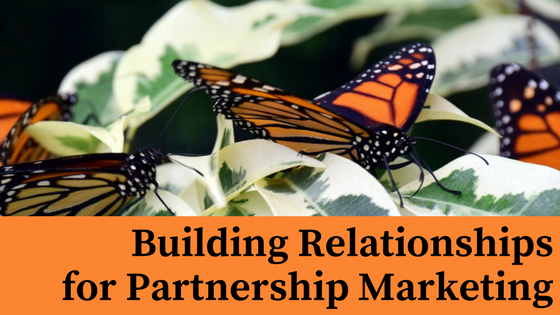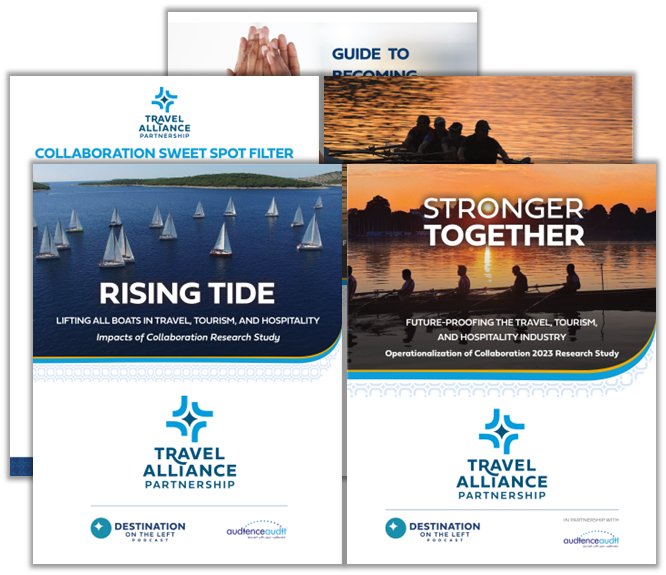Building Relationships for Partnership Marketing
Museums have a unique perspective in the tourism industry, and they form their collaborations and change around community. What can other tourism attractions and destinations learn from these foundational relationships with the community? How can we approach partnership marketing in new ways that fuel change and build more than visitation?
Museums are cultural institutions, aiming to serve the community, preserve history and educate. And yet they also have a tourism mindset of needing to bring people in the door. This focus on the community influences everything museums do – including how they collaborate. They are building relationships to connect with the community, solve community issues and meet community needs. These relationships build the foundation for successful partnership marketing.
Connecting with the Community
The Wild Center reached a new section of their community by partnering with them on the Community Maple Project. Stephanie Ratcliffe, Executive Director of The Wild Center, explained that the project aimed to connect with the residents on a tradition that was in danger of being lost.
Many museums face a challenge of having people who feel that museums aren’t for them. And yet what I heard from everyone in the museum industry, they want their museums to be for everyone. The tradition of maple sugaring was beginning to fade, but while the surrounding areas were rich with sugar maples, none were on the property. So they tapped into the community – literally! Community members learned how to set up taps in their backyards and brought the sap to The Wild Center to be made into syrup. People who hadn’t come to the museum before were not only coming in for the project, they were excited to participate.
Partnerships with Relevance
Pamela Reed Sanchez, Executive Director, Seneca Park Zoo Society and Jonathan Binstock, The Mary W. and Donald R. Clark Director, Memorial Art Gallery talked about creating relevant programs that meet a community need. For these organizations and The Wild Center, this shows up in the form of programs that go beyond partnership marketing, extending into the realms of experiential education and workforce development with local schools.
Education
The Memorial Art Gallery has a partnership with the Rochester City School District that goes beyond the basic field trip. They worked with educators throughout the school district to create a program where entire classes visit weekly for 10 weeks. The kids engage deeply during their two-hour visits and they start to see the museum as theirs. The program is changing the culture of the classrooms and schools as well. They are working to collect data on how it affects students’ ability to learn.
The Wild Center school visit program is an annual field trip for many schools and their relationship with the local schools is so strong that the superintendent refers to The Wild Center as the school’s “science wing.”
Plimoth Patuxet Museums are also an annual trip for many in the Massachusetts area. Their education program includes field trips, summer camps, visiting historians (both in person and virtual) as well as a computer game that is a learning resource for students.
Virtual trips are also an option at Old Sturbridge Village, where classes can visit the village together on a 3D Tour from afar.
Workforce Development
The Seneca Park Zoo Society has an urban ecologist workforce program, a workforce development program to encourage more diversity in the environmental sciences. The workforce program is a paid position for high school juniors and seniors, encouraging and supporting students’ interest in ecology. An after-school program teaches kids about nature, geocaching and nature journaling. They also launched a new curriculum, called Zoo Scholars, with the Rochester City School District to support education in math, science and language arts.
Visioning Collaborative Change
The theme for the 2018 Museum Association of New York conference was Visioning Change. For me, this came across most strongly in the keynote on Sunday given by James R. Hackney, Jr., Senior Director of Development, Yale Divinity School. Hackney described collaboration beautifully:
“We’re doing something for the common good. We’re not competing with each other. Every museum in the Museum Association of New York and in the United States has a specific role to play. We are only better, if we are better together. We’re all in this together.”
James R. Hackney, Jr.
This collaborative mindset is a key part of change. And change is crucial to moving forward. To paraphrase another quote from the keynote, change is difficult – it happens to you, or you cause it. He encouraged everyone to move and cause change. To embrace uncertainty as the new normal and to try new things without fear of failure.
Author
Related Posts
Communication: The 3 C’s of World-Changing Collaborations
Big ideas and big achievements don’t happen alone. They require teamwork and a shared goal. That’s why collaboration is essential, especially in the travel and…
Building Belonging in Tourism Marketing
The days of relying on glossy brochures and catchy taglines to attract travelers are behind us. Today, what truly resonates with visitors isn’t a brand’s…

